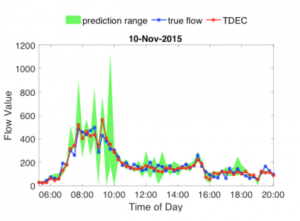Traffic congestion is a never-ending logic puzzle, dictated by commute patterns, but also by more stochastic accidents and similar disruptions. Traffic engineers struggle to model the traffic flow that occurs after accidents – and doing it in real-time, which allows for engineers to actually adjust the flow of traffic in response, is an even greater challenge. Now, a team of researchers at Lawrence Berkeley National Laboratory are working with the California Department of Transportation (Caltrans) to use HPC and machine learning to tackle that challenge.
Berkeley Lab’s approach aimed to improve Caltrans’ incident response decision-making by feeding real-time Caltrans camera data from partners at the city, county and state levels into an ensemble learning model, which combines a diverse set of individual models to improve the model’s predictive power.
“Many traffic-flow prediction methods exist, and each can be advantageous in the right situation,” said Sherry Li, a mathematician at Berkeley Lab. “To alleviate the pain of relying on human operators who sometimes blindly trust one particular model, our goal was to integrate multiple models that produce more stable and accurate traffic predictions. We did this by designing an ensemble-learning algorithm that combines different sub-models.”

The model, processed on an Apache Spark cluster in the Amazon cloud, successfully yielded new algorithms that accurately predicted traffic flows – specifically, demand at freeway entrances and exits – at rolling 15-minute time intervals. To tackle congestion caused by traffic or accidents, the team used real-time learning techniques so that it could adapt to new traffic conditions communicated by the Caltrans sensors.
The new system is currently being trialed in Los Angeles through a pilot on I-210 before being deployed to Arcadia, Duarte, Monrovia and Pasadena in 2020, with plans for future expansion.
“The first deployment of the Connected Corridors program is intended to validate the concept and quantify improvements in travel times, traffic flow, and delays under real-world conditions,” said Brian Peterson, who leads the the systems development team at PATH. “Traffic modeling has indicated that significant improvements are possible with the traffic management strategies being developed. Future deployments are in the planning stage with opportunities for ongoing system improvements and new approaches.”
The research was conducted in partnership with California Partners for Advanced Transportation Technology (or PATH, a part of UC Berkeley’s Institute for Transportation Studies) and Connected Corridors, a program that aims to develop and test an integrated transportation corridor management approach in California.
To read more about this research, visit the original release here.





























































